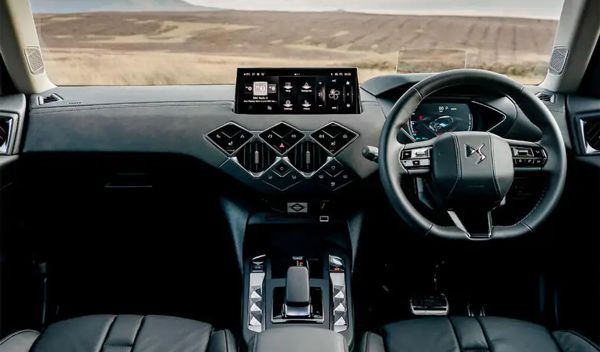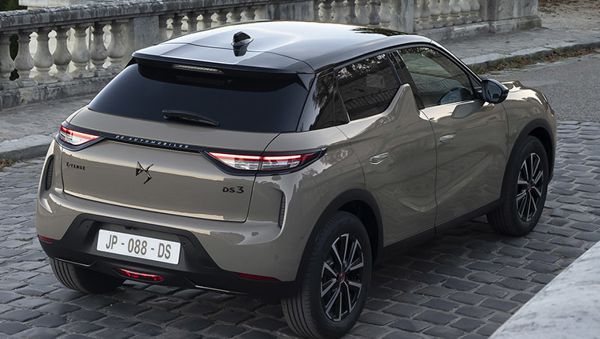Published
on 5
Jun 2024
|
All rights reserved.
|
|
|

|
|
Differs
from its siblings in only packaging and chassis tuning, but did most of
them wrong.
|
|
The last generation DS3 –
without a space between DS and 3 – was the first Citroen resurrecting
the legendary DS name. Since then DS was developed into a range of
semi-premium cars, albeit with limited success, under the leadership of
PSA and then Stellantis chief Carlos Tavares. It was detached from
Citroen and became a standalone brand within the group since 2014.
In late 2018, the long-serving DS3 Mk1 finally retired. Its position
was partially taken up by DS 3 Crossback. Though seen as an
SUV-crossover, it was still constructed like a conventional supermini
based on the group’s Common Module Platform (CMP). It had a higher ride
height, but that was reduced by 10mm in later revision. It was taller
than the original DS3, of course, but still comfortably under the
1550mm mark with which I use to separate cars and SUVs. Moreover, since
DS no longer builds any conventional superminis, the DS3 Crossback
should be seen as direct successor to the DS3. This turned out to be
true when the “Crossback” name was dropped at the end of 2022.
Unfortunately, the new DS 3 is not quite as remarkable as the first
generation. It tries very hard to be premium and unique, but the
outcome is unconvincing. Take the exterior design for example, it looks
strange and over-designed. Moreover, the strange appearance sacrifices
functions, resulting in poor visibility from the cockpit, blame to the
odd “shark fin” B-pillars, very thick A and C-pillars and a rising
waistline that made the rear side windows unusually small. Rear
passengers feel especially claustrophobic. Moreover, they are served
with very little leg and head room, so that a 6-foot tall guy is
impossible to be there for any trips longer than 15 minutes.

|
|
Interior
design favours style over functions.
|
|
The interior design also favours style over functions. While the
diamond patterns on center console looks fresh, their touch-sensitive
buttons and undistinguished positions make control a nightmare. The
touchscreen runs the group’s latest software, but DS’ unique user
interface is far from intuitive, for example, needing to tap into
another level to access climate settings.
Build quality also fails to match the ambition of DS brand. While
higher trim levels offer plushed leather seats and premium-feeling
leather
or suede trims wrapping the dashboard, the rest of the cabin, including
lower part of the dash, console, tunnel and door panels, are molded
in cheap hard plastics.
Mechanically, there is nothing to separate the DS 3 from other
Stellantis models based on CMP platform. It offers only 1 petrol
engine, which is the 1.2-liter Puretech 3-cylinder turbo in 100 hp, 130
hp or 136 hp form – the latter is equipped with mild-hybrid system
which incorporates a 29 hp motor into the 6-speed DCT. 0-60 mph is
accomplished in about 8 seconds, not bad, but the three-pot engine is
not the most refined on the market. There is some intrusive vibration
and noise when revving it under full throttle that don’t match its
premium
pretension.

|
|
Restless
ride is the biggest dynamics weakness.
|
|
Road and wind noises are better insulated, but the ride quality is
quite poor. DS opts for a soft suspension setup which exhibits a lot of
confidence-hurting pitch and roll as well as early understeer, but poor
damper setting
and, unlike Citroen, lack of hydraulic bump stops result in a lot of
bounces on high-speed undulations, hence a restless ride over long
distance. In urban area, the car works much better in absorbing
low-speed
bumps and potholes, but that competence is too limited. As for
handling,
apart from the aforementioned body control and stability problem, the
light and numb steering also discourages driving with excitement in
mind.
Electric model called E-Tense employs the same hardware as other e-CMP
models. This consists of a front-mounted 156 hp motor and 54 kWh of
batteries that is mounted under the front and rear seats. Thanks to
lower center of gravity contributed by the batteries, the electric
model rolls less in corner. Its extra weight also helps tying down the
suspension, displaying less bounces as if the suspension was designed
for greater loads from the outset. However, the ride quality is still
hardly
called refined. For an EV, the performance and range it offers is best
to be described as reasonable, but the DS is not a cheap car, so
expectation should be higher than its other Stellantis siblings.
As seen, the DS 3 differs from its siblings in only packaging and
chassis tuning. Somehow, the DS development team did most of them
wrong, resulting in an inferior and undesirable product.
|
Verdict:   |
|